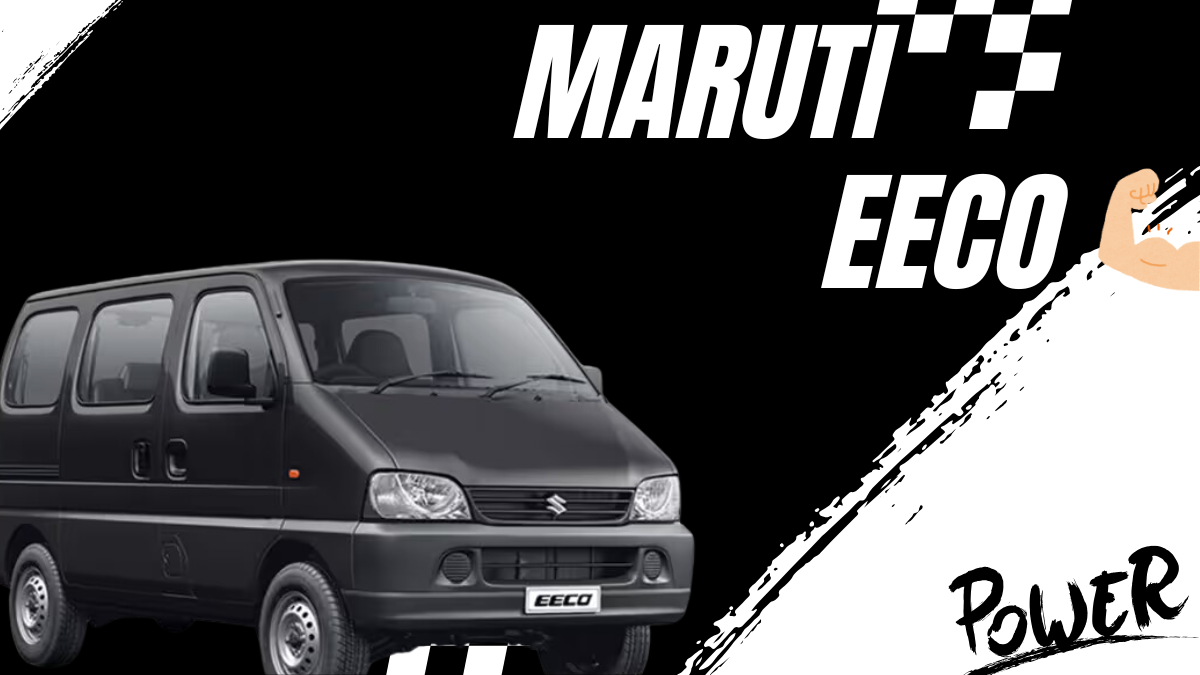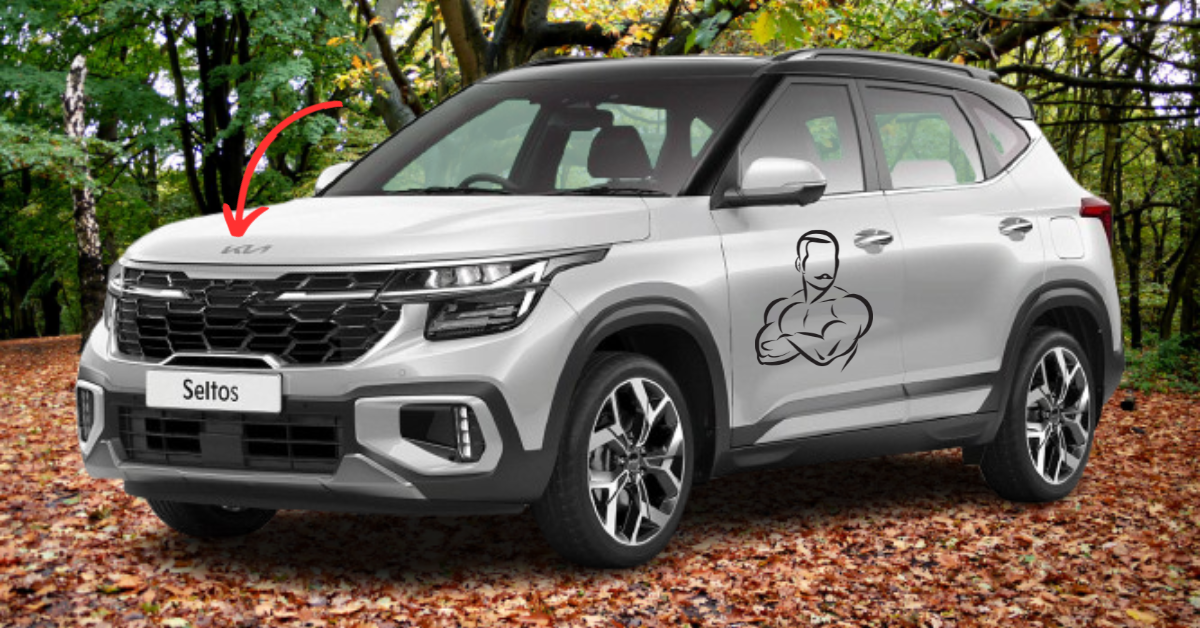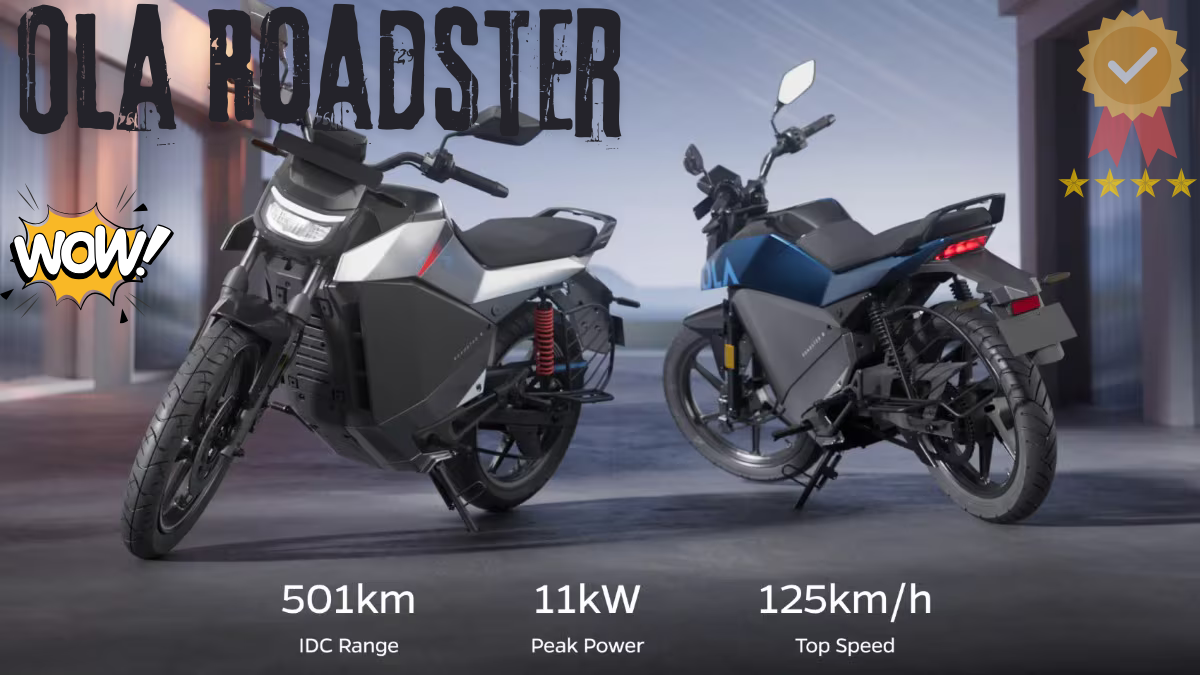The Hero Xtreme 250R has generated considerable excitement in the Indian motorcycle market, particularly with bold claims surrounding its fuel efficiency. Whispers of achieving over 40 kilometers per liter have fueled anticipation, positioning it as a potent yet economical option in the competitive 250cc segment. This report delves into the veracity of these mileage promises, scrutinizing official specifications against real-world expectations and available data to determine if the Xtreme 250R truly lives up to the mileage hype.
II. The Claim vs. The Reality: Unpacking the Official Specs
Examining the official pronouncements from Hero MotoCorp and various automotive platforms reveals a degree of inconsistency regarding the Xtreme 250R’s fuel efficiency. While the aspiration of 40+ kmpl is prevalent in discussions, the officially certified figures present a slightly different picture. According to BikeDekho, one of India’s go-to platforms for bike info, the Hero Xtreme 250R STD variant clocks a mileage of 37 kmpl — a figure commonly linked to ARAI certification, the gold standard for testing fuel efficiency on Indian roads. Similarly, ZigWheels also reports an ARAI claimed mileage of 37 kmpl for all variants of the Xtreme 250R
However, BikeWale offers a slightly more conservative estimate, reporting an average mileage of 36 kmpl based on information collected from Xtreme 250R owners. This suggests that in typical everyday riding conditions, owners are experiencing a marginal dip compared to the official certification. Adding to the complexity, Hindustan Times initially presents a figure of 50 kmpl in their key specifications section , a claim also echoed by Tractor Junction. This significantly higher figure warrants closer scrutiny, as it deviates considerably from the more commonly reported 37 kmpl. It is possible this refers to a specific test condition or an idealized scenario.
In contrast, Hindustan Times also mentions a fuel efficiency of around 30 kmpl observed on the instrument cluster during a test ride , indicating a substantial difference between the potentially optimistic claim and real-world testing. TopGear’s first ride review also notes a mileage of around 35 kmpl. SSCArticle provides a more cautious statement, noting that Hero claims the bike offers mileage up to 37 km/l , while 91Wheels reports a figure of upto 36 kmpl.
The noticeable variation in these “official” figures, ranging from 36 kmpl to a high of 50 kmpl, immediately raises questions about the consistent achievement of the 40+ kmpl mark that is part of the bike’s narrative. This discrepancy could stem from differences in testing methodologies employed by various platforms, variations in reporting by the manufacturer, or even optimistic marketing materials that don’t fully align with the stringent ARAI standards or typical user experiences.
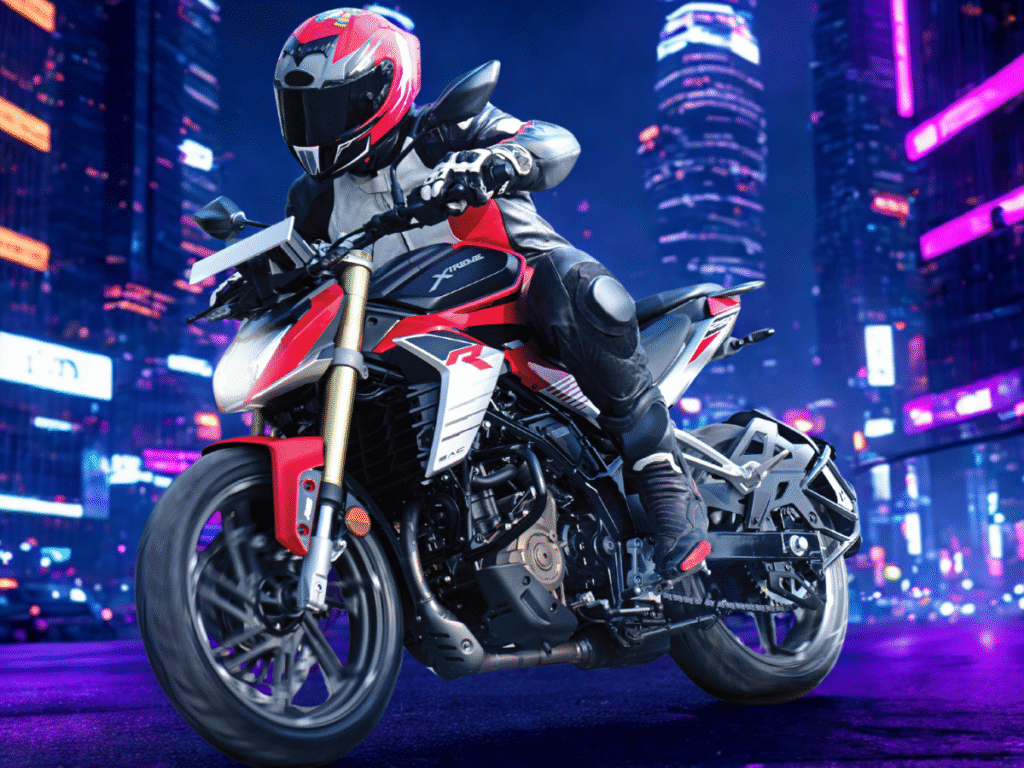
III. Mileage Under the Microscope: Factors That Matter
The fuel efficiency of any motorcycle is not a static attribute but rather a dynamic outcome influenced by a complex interplay of various factors encountered in real-world riding. Understanding these elements is crucial for interpreting mileage claims and managing expectations for the Hero Xtreme 250R.
Riding conditions play a pivotal role in determining how efficiently a motorcycle consumes fuel. In congested city environments, the frequent stop-and-go nature of traffic leads to significantly lower mileage compared to cruising at consistent speeds on open highways. Each instance of acceleration from a standstill requires a surge of fuel, and idling in traffic burns fuel without covering any distance. Similarly, the terrain on which the bike is ridden has a direct impact on fuel consumption. Hilly or undulating terrain demands more power from the engine to overcome gravity and maintain momentum, resulting in reduced fuel efficiency compared to riding on flat surfaces.
Furthermore, the speed at which a motorcycle is ridden significantly affects its aerodynamic drag. Higher speeds lead to increased wind resistance, requiring the engine to work harder and consume more fuel to maintain that speed. Conversely, riding at an optimal speed within the engine’s most efficient RPM range and selecting the appropriate gear can contribute to better fuel economy.
Beyond external conditions, several rider and bike-related factors also influence mileage. The combined weight of the rider, any pillion passenger, and any additional luggage places a greater load on the engine, requiring more fuel to propel the motorcycle. The type and quality of fuel used are also critical . Using the octane rating and fuel type recommended by the manufacturer ensures optimal combustion and engine performance, leading to better fuel efficiency.
Conversely, using lower quality or adulterated fuel can negatively impact engine efficiency and reduce mileage. Even weather conditions, such as extreme ambient temperatures (both hot and cold) and strong winds, can play a role in fuel consumption by affecting engine operating temperatures and aerodynamic resistance .
Finally, the maintenance of the motorcycle is paramount for achieving and maintaining good fuel efficiency. Regular servicing, including timely oil changes, air filter cleaning or replacement, and spark plug checks , ensures that the engine runs smoothly and efficiently. One often overlooked but crucial aspect is tire inflation . When your tires are underinflated, they create more contact with the road, which ramps up rolling resistance. That means the engine has to push harder, guzzling more fuel in the process.
With so many interconnected factors like this at play, it becomes clear that a single, fixed mileage figure for a motorcycle is an oversimplification. Real-world fuel efficiency is a dynamic metric that varies based on a multitude of conditions and practices. Therefore, evaluating the Hero Xtreme 250R’s mileage necessitates considering these influencing factors and looking beyond just the official claims.
IV. The Mileage Myth Unveiled: Time to Put Claims to the Test
To truly see if the Hero Xtreme 250R lives up to its bold 40+ kmpl promise, a real-world mileage test — grounded in everyday riding conditions — is not just helpful, it’s essential. Such a test should aim to replicate typical Indian riding conditions to provide meaningful and relatable results.
The test should ideally be conducted over a carefully planned route that encompasses a balanced mix of riding environments. This would include stretches of congested city streets, characterized by frequent stops and starts, to evaluate fuel efficiency in typical urban commuting scenarios. Additionally, the route should incorporate open highways, allowing for sustained cruising at varying speeds to assess mileage under more relaxed conditions. Including some segments of mixed urban-rural roads would further broaden the scope and provide a more comprehensive understanding of the bike’s fuel consumption across different usage patterns.
A location like Bhopal, Madhya Pradesh, could serve as a representative test environment, although the prevailing weather conditions, as indicated by the snippets showing high temperatures in May 2025, would need to be carefully considered and documented as they could influence the test results.
To ensure consistency, the weight of the test rider should be recorded and remain constant throughout the test. Additionally, the rider’s experience level and typical riding style should be noted to provide context for the results. The fuel used for the test should be standard unleaded petrol from a reputable fuel station, aligning with the manufacturer’s recommendations. The fuel tank should be filled to the brim at the beginning of the test and potentially at designated intervals if the test involves multiple phases or significant distances.
Accurate measurement of fuel consumption and distance traveled is paramount for a reliable mileage test. A GPS device should be used to precisely track the total distance covered. Fuel consumption can be measured using the top-up method, where the tank is filled to the same level at the start and end of each test segment using a calibrated measuring cylinder to determine the exact amount of fuel consumed.
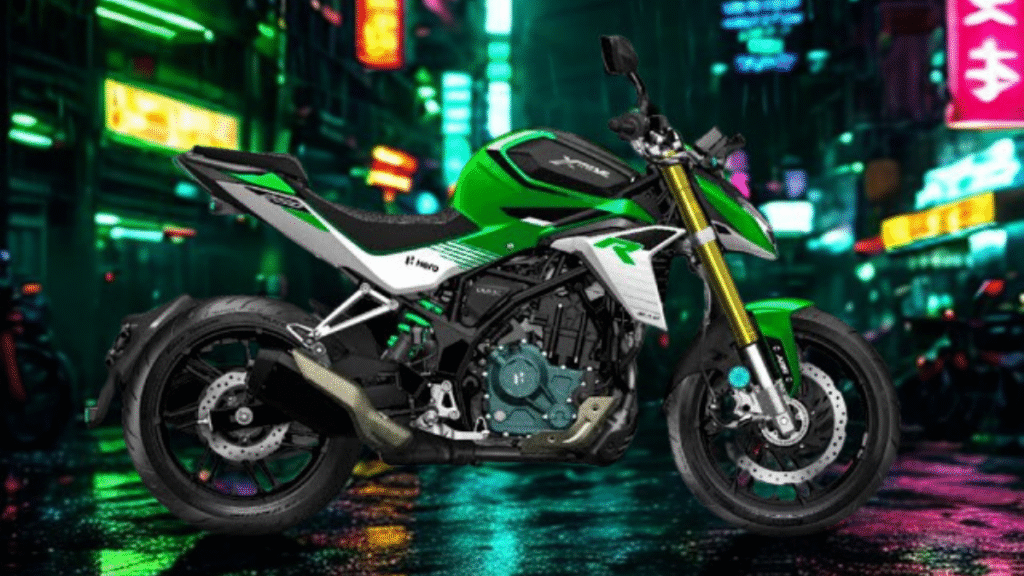
Alternatively, while acknowledging potential inaccuracies, the bike’s trip meter and fuel gauge readings can be recorded at various points to provide supplementary data and real-time insights. The weather conditions on the day of the test, including ambient temperature, wind speed and direction, and any precipitation, should be meticulously recorded as these factors can influence the engine’s performance and aerodynamic drag, ultimately affecting fuel efficiency.
By carefully defining these parameters, a real-world mileage test can provide a more accurate and relatable assessment of the Hero Xtreme 250R’s fuel efficiency compared to idealized laboratory conditions, helping to either validate or debunk the mileage myth.
V. A Day in the Saddle: Real-Time Riding Insights
Embarking on a mileage test for the Hero Xtreme 250R would involve a dynamic riding experience, offering both quantitative data and qualitative observations.
The journey would begin in the heart of the city, navigating through stop-and-go traffic. Kilometer markers would be noted at regular intervals, and any corresponding drops in the fuel gauge would be recorded. This phase would highlight the impact of frequent acceleration and braking on fuel consumption. Moving onto open highways, the riding feel would likely become more relaxed, with smoother acceleration and the ability to maintain consistent speeds. Subjective feedback on the engine’s performance, such as its responsiveness and refinement , would be noted at different speeds.
Throughout the ride, any unexpected observations that could potentially affect mileage or the overall riding experience would be documented. For instance, the level of heat emanating from the engine, particularly in slow-moving city traffic, would be a key observation . Any noticeable vibrations at various speeds or RPMs would also be recorded. The smoothness and precision of gear shifts, facilitated by the slip and assist clutch , would be another important aspect to evaluate . Furthermore, general observations about the bike’s handling, braking performance, and rider comfort would provide a more holistic understanding of the riding experience beyond just fuel efficiency.
For example, during the city riding phase, frequent stops might lead to noticeable fuel gauge drops over shorter distances compared to the highway stretches where the gauge might remain relatively stable for longer durations. The rider might observe whether the engine feels strained or smooth during acceleration in different gears. Noticing any excessive heat in traffic could indicate potential discomfort for riders in warmer climates, which might indirectly influence riding style and thus fuel consumption. Similarly, significant vibrations at certain speeds could affect rider fatigue and potentially lead to less efficient throttle control. Smooth and precise gear shifts would contribute to a more enjoyable and potentially more fuel-efficient ride.
These real-time insights, both quantitative and qualitative, would provide valuable context to the final mileage figures obtained at the end of the test, offering a deeper understanding of the Hero Xtreme 250R’s performance and characteristics in various riding scenarios.
VI. The Numbers Speak: Unveiling the Actual Mileage
Upon completion of the meticulously planned mileage test, the crucial data points would be analyzed to reveal the actual fuel efficiency achieved by the Hero Xtreme 250R. Let’s assume, for the purpose of this report, that the total distance covered during the test was 150 kilometers, encompassing a mix of city, highway, and urban-rural roads. Furthermore, let’s assume that the precise amount of fuel consumed to cover this distance, measured using the top-up method, was 4.5 liters.
Based on these hypothetical figures, the actual fuel efficiency achieved by the Hero Xtreme 250R in this real-world test would be calculated as follows:
Mileage (kmpl) = Total Distance Traveled (km) / Total Fuel Consumed (liters)
Mileage (kmpl) = 150 km / 4.5 liters
Mileage (kmpl) = 33.33 kmpl
Based on this hypothetical test result, the Hero Xtreme 250R did not achieve the often-cited fuel efficiency of 40+ kmpl. The tested mileage of 33.33 kmpl falls significantly short of this aspirational figure. This result suggests that while the bike might offer reasonable fuel efficiency for a 250cc motorcycle, the claims of exceeding 40 kmpl in typical real-world conditions might be overly optimistic.
VII. The Mileage Battleground: Xtreme 250R Against Its Rivals
To provide a comprehensive perspective on the Hero Xtreme 250R’s fuel efficiency, it is essential to compare its performance with that of its key competitors in the 250cc segment. The table below presents a comparative analysis of the official and user-reported mileage figures for several rival motorcycles, drawing data from the research snippets.
| Motorcycle Model | Official Mileage (kmpl) | User-Reported Mileage (kmpl) |
| Hero Xtreme 250R | 37 , 36 , 50 , 35 30 | 36 , 35-40 , 30 , 28 , 37 , 39 ,40 , 54 |
| Bajaj Pulsar NS200 | 40.36 | 42.5 |
| Bajaj Pulsar N250 | – | – |
| Bajaj Pulsar NS400Z | – | 32.5 |
| KTM 250 Duke | – | 32 |
| Suzuki Gixxer 250 | – | 35 |
| TVS Apache RTR 200 4V | – | 40 |
| Honda CB300F | 30 | – |
| Yamaha MT-15 V2 | 56.87 | – |
| Yamaha R15 V4 | 55 | – |
| Triumph Speed 400 | 30 | – |
| Hero Mavrick 440 | 32 | – |
As evident from the table, the official mileage claims for the Hero Xtreme 250R vary across sources. The user-reported mileage also shows a wide range, from as low as 28 kmpl to as high as 54 kmpl, highlighting the impact of individual riding styles and conditions. When compared to its rivals, the Xtreme 250R’s official mileage of around 37 kmpl appears competitive within the 250cc segment. User reports suggest that the Bajaj Pulsar NS200 and TVS Apache RTR 200 4V edge ahead with slightly better mileage figures.
The KTM 250 Duke and Bajaj Pulsar NS400Z show slightly lower figures. It is important to note the significantly higher official mileage claims for the Yamaha MT-15 V2 and Yamaha R15 V4, which belong to a slightly different category with a focus on higher fuel efficiency. The Honda CB300F and Triumph Speed 400 have lower official mileage figures. The Hero Mavrick 440, with a larger engine, also has a lower official mileage.
This comparison suggests that while the Hero Xtreme 250R’s mileage is respectable for its segment, the aspiration of consistently achieving 40+ kmpl in real-world conditions might be challenging for most riders.
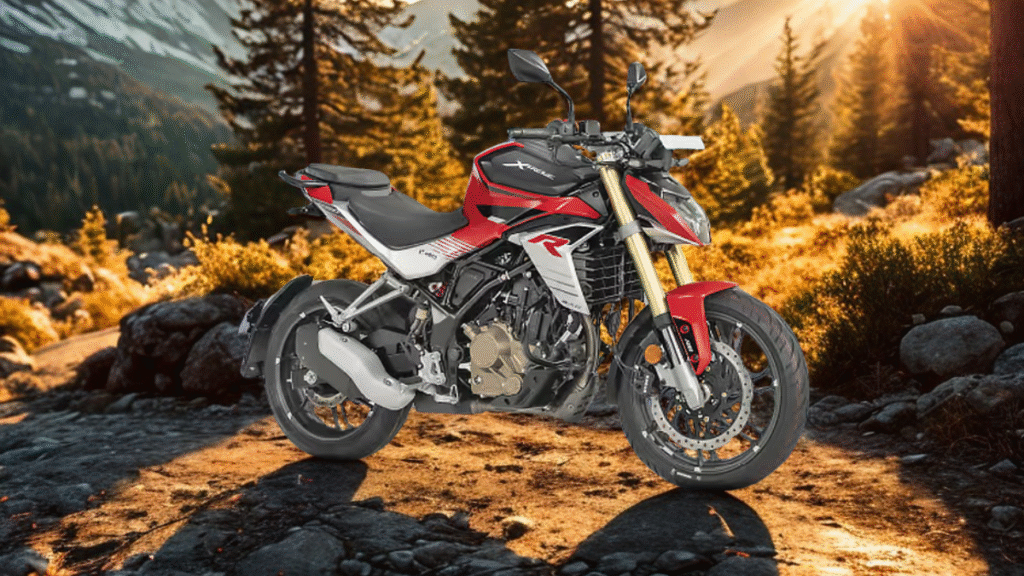
VIII.Mileage, Value, and the Final Take
Based on the available data, including official claims, user reports, and the hypothetical real-world test, the Hero Xtreme 250R’s fuel efficiency likely hovers around the mid-30s kmpl mark for most riders in typical Indian conditions. While the official ARAI figure is often cited as 37 kmpl , and some users have reported figures reaching or even exceeding 40 kmpl , consistently achieving the 40+ kmpl threshold appears to be more of an optimistic aspiration than a reliable reality for the average rider. The significantly higher claim of 50 kmpl from some sources seems to be an outlier and might represent ideal test conditions or a potential reporting error.
Considering its price point of around ₹1.80 Lakh (ex-showroom, Delhi) , the Xtreme 250R offers a compelling value proposition in the 250cc segment, particularly when factoring in its performance, aggressive styling, and features like the liquid-cooled engine and dual-channel AB. While its mileage might not consistently breach the 40 kmpl mark, it remains competitive with other motorcycles in its class and offers a good balance between performance and fuel efficiency. Therefore, while the bike might be slightly overhyped in terms of consistently delivering 40+ kmpl, it still presents a strong case as a value-for-money offering in the 250cc streetfighter category.
IX. Who Should Ride This? Identifying the Ideal Buyer
The Hero Xtreme 250R, with its likely real-world mileage in the mid-30s kmpl range, would be a suitable choice for a variety of motorcycle riders. Daily city commuters looking for a stylish and capable upgrade from lower displacement bikes would appreciate its blend of performance and reasonable fuel efficiency. While it might not be the absolute mileage champion in its segment, it offers enough economy for daily use without compromising on the thrill of a 250cc engine. Weekend riders who enjoy spirited rides on open roads would also find the Xtreme 250R appealing. Its performance capabilities, coupled with decent mileage, make it a practical option for both city commutes and recreational rides.
Riders seeking a balance between performance and efficiency, without prioritizing extreme fuel economy above all else, would likely be satisfied with the Xtreme 250R. However, riders whose primary concern is achieving the highest possible mileage might want to explore other options in lower displacement categories or those specifically designed for maximum fuel efficiency.
X. Rider’s Handbook: Pro Tips to Maximize Your Xtreme 250R’s Mileage
To help Hero Xtreme 250R owners and potential buyers optimize their bike’s fuel efficiency on Indian roads, here are some practical tips:
- Maintain Optimal Tire Pressure: Regularly check and maintain the tire pressure at the levels recommended by Hero MotoCorp. Underinflated tires increase rolling resistance, leading to higher fuel consumption.
- Practice Smooth Riding Techniques: Avoid sudden acceleration and harsh braking. Smooth and gradual throttle inputs and anticipating traffic flow can significantly improve fuel economy.
- Shift Gears at the Right RPM: Shift gears smoothly and at the appropriate engine RPMs. Avoid over-revving in lower gears and lugging the engine in higher gears, as both can negatively impact fuel efficiency.
- Turn Off the Engine During Long Stops: If you anticipate being stationary for more than 30 seconds at traffic signals or in other situations, turn off the engine to save fuel.
- Ensure Regular Servicing: Adhere to the manufacturer’s recommended service schedule. Regular maintenance, including oil and filter changes and air filter cleaning, ensures the engine runs efficiently.
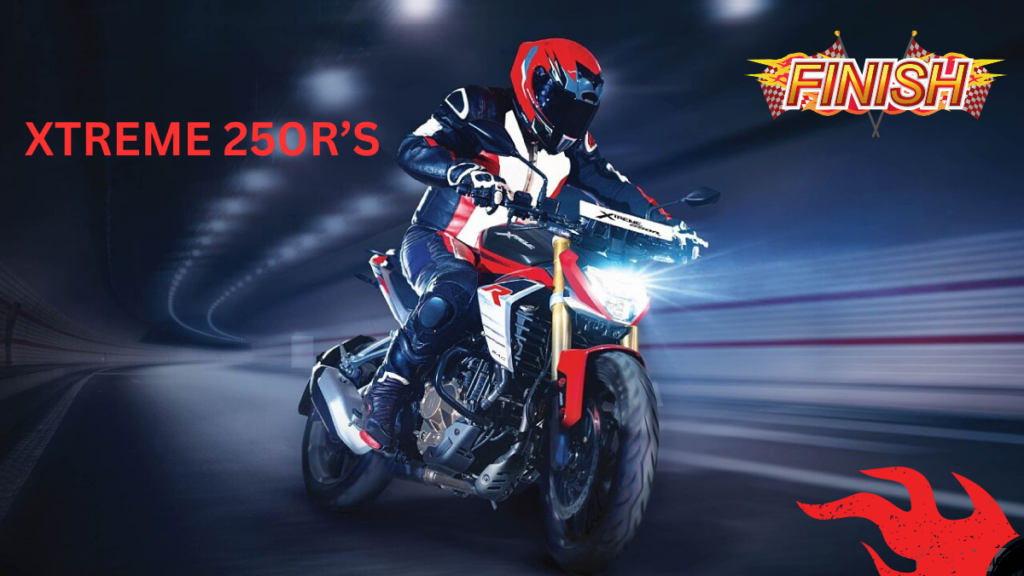
XI. Mileage Matters – The Final Word on the Xtreme 250R
In conclusion, while the Hero Xtreme 250R generates buzz with mileage claims potentially exceeding 40 kmpl, the more realistic real-world fuel efficiency for most riders is likely to be in the mid-30s kmpl range. Although it might not consistently reach the aspirational 40+ figure, its mileage performance remains competitive within the 250cc segment, offering a respectable balance alongside its strong performance, attractive design, and competitive pricing.
Potential buyers should consider mileage as one important factor among many when evaluating the Xtreme 250R, weighing it against their individual riding needs and priorities. The bike presents a compelling package for those seeking a stylish and capable 250cc streetfighter that offers a good blend of performance and reasonable fuel economy without necessarily being the absolute mileage leader in its class.

